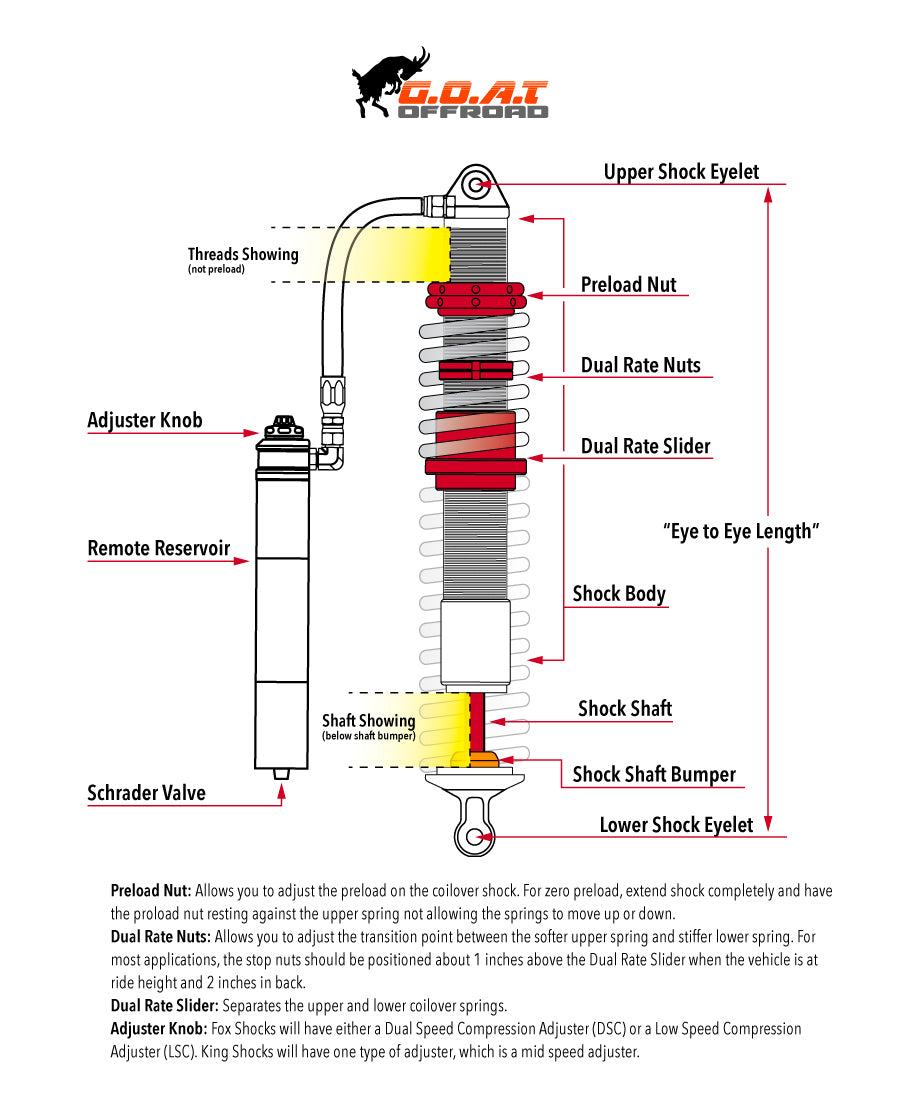Lets talk terminology. We want everyone to understand what they are buying and how it benefits them and this is something that is sorely lacking in the Australian aftermarket 4wd scene.
- Hydro/Air Bump – A short travel shock designed specifically for preventing bottoming out.
- Air Shock – A shock which uses a large diameter shaft to act as a spring and damper.
- Bleed – A hole through the piston through which oil can pass unrestricted.
- Bypass – A shock which has external damping adjustment for predefined regions.
- Coil-over – A threaded body shock which has coilover springs installed on it.
- Shock Diameter — This is the diameter of the main shock body, usually measured in inches. Bigger shock diameter, means more oil capacity which equals better performance and less stress on the shock during hard use. Can never be big enough essentially.
- Compression — This is the action of the shock getting shorter. Adjustment of the compression knob controls how much force is required to make the shock get shorter.
- Rebound — This is the action of the shock getting longer. Adjustment of the Rebound changes how quickly the shock can return to its extended state.
- Reservoir — Allows a shock to carry additional oil. More oil, means the oil stays cooler, see below for shock fade. Reservoirs can be Remote; Connected by a hose or Piggyback; Machined as part of the shock body.
- Shock fade — Due to friction of a shock repeatedly cycling, the oil can heat up, which changes the viscosity of the oil (oil gets thinner) meaning the internal valving of the shock stops working as desired.
- Connecting members – things connecting sprung and unsprung weight such as A-Arms, suspension links and leaf springs.
- Corner weight – the weight of one corner of the vehicle. Left and right sides may be slightly different. For our calculators it is recommended to provide averages of left and right corner weights.
- Dual Rate – A spring setup using two stacked springs, commonly with a cross over point when the upper spring stops collapsing and transitions fully to the lower spring rate.
- Flutter stack – A type of shock valving where smaller diameter disks are inserted between larger diameter disks.
- Motion Ratio – How much the shock moves in relation to how much the wheel moves. A motion ratio of 0.5 would mean the shock moves one inch for every two inches the wheel moves.
- Preload – The amount of spring tension applied when the suspension is at full droop (limit straps installed). This is often measured in inches. Preload is most commonly measured at the shock, but can also be measured at the wheel for comparisons between vehicles.
- Pyramid stack – A type of shock valving where many disks are used, and each one gets progressively smaller or larger, and looks like a pyramid.
- Smoothie – A smooth body shock.
- Spring Rate – Upper and lower springs each have their own rate, when combined they form a new, softer rate defined by the following equations.
- Sprung Weight – everything on top of the springs and shocks, includes roughly 2/3 the weight of connecting members.
- Unsprung Weight – weight of everything below the springs such as tires, wheels, solid axles, and roughly 1/3 the weight of connecting members.
- Wheel Rate – This is the spring rate at the wheel, it takes into account the suspension motion ratio and is useful for comparing across vehicles.



Dejar un comentario
Este sitio está protegido por hCaptcha y se aplican la Política de privacidad de hCaptcha y los Términos del servicio.